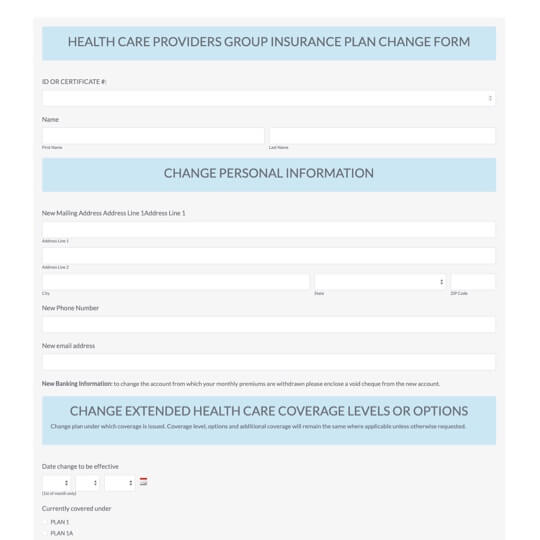Hurricane Helene Flood Resilience: Addressing Coverage Gaps
Hurricane Helene flood resilience has become a crucial focus for communities impacted by natural disasters, particularly in the wake of the storm’s devastating effects in September 2024. The hurricane unleashed unprecedented rainfall across the Southeast, exposing significant vulnerabilities in flood insurance coverage among inland residents. Many homeowners were left unprotected, highlighting the urgent need for increased awareness about the flood protection gap that exists in non-coastal regions. Private flood insurers are stepping in to bridge this gap, offering policies that can help mitigate the financial fallout from such disasters. As the frequency and severity of storms rise, understanding the importance of natural disaster insurance is essential for safeguarding lives and property against future flooding events.
The resilience of communities in the face of Hurricane Helene’s impact underscores the need for robust flood management strategies and insurance awareness. Following the storm, it became evident that many residents lacked adequate flood coverage, exposing them to substantial financial risks. With private insurers increasingly stepping up, there is a growing recognition of the importance of proactive flood protection measures to address the vulnerabilities revealed by recent natural disasters. As homeowners grapple with the complexities of flood insurance, bridging the protection gap through informed decision-making becomes paramount. Ensuring that individuals are equipped with the right natural disaster insurance can significantly enhance their preparedness for future flooding challenges.
Understanding the Impact of Hurricane Helene on Flood Resilience
Hurricane Helene’s catastrophic impact in September 2024 serves as a stark reminder of the increasing vulnerability of inland regions to flooding, a danger previously underestimated. The storm’s 40 trillion gallons of unleashed water devastated communities across a 500-mile stretch, including Florida, Georgia, the Carolinas, Virginia, and Tennessee. The aftermath, with hundreds of fatalities and billions in insured losses, highlighted the alarming flood protection gap that exists, especially in non-coastal areas. Residents in western North Carolina, for instance, faced the brunt of this disaster, with less than 1% of Buncombe County residents having federal flood insurance when the storm struck, underscoring the urgent need for enhanced flood resilience measures in at-risk communities.
Moreover, the experience of Hurricane Helene mirrors that of past storms, such as Hurricane Ida, which revealed a broader pattern of inadequate flood insurance coverage across the East Coast. With less than 5% of the impacted areas covered by flood insurance, the reliance on federal programs like the National Flood Insurance Program (NFIP) exposes significant vulnerabilities. As urban development continues to expand into flood-prone regions, the lessons learned from Helene should propel local and state governments to adopt comprehensive flood resilience strategies that not only address immediate needs but also invest in long-term solutions to mitigate future risks.
The Role of Private Flood Insurers in Closing the Protection Gap
In the wake of Hurricane Helene, private flood insurers have taken proactive steps to mitigate the widening flood protection gap. Historically, the NFIP dominated the flood insurance landscape; however, recent shifts have allowed private insurers to provide coverage, thus enhancing options for homeowners. Since 2016, the private market has experienced significant growth, with more than half of all homeowners with flood insurance now relying on private policies. This shift reflects a growing confidence among insurers to assume flood risk, bolstered by advancements in data analytics and risk assessment techniques.
The expansion of private flood insurance is crucial, especially given the increased frequency and unpredictability of natural disasters. By offering tailored products that meet the specific needs of homeowners in vulnerable areas, private insurers can help bridge the gap left by federal programs. However, consumer education remains essential; many homeowners still mistakenly believe that standard homeowners policies cover flood damage. As awareness of flood insurance grows, so too will the ability of private insurers to effectively contribute to closing the protection gap, ultimately leading to a more resilient society that is better prepared for future flooding events.
Enhancing Homeowner Awareness About Flood Insurance
The aftermath of Hurricane Helene revealed a critical need for increased homeowner awareness regarding flood insurance. Many residents in affected areas, like Buncombe County, were caught unprepared due to a lack of understanding about their coverage options. A significant misconception persists that standard homeowners insurance policies protect against flood damage, leading to inadequate preparation for natural disasters. This gap in understanding has dire consequences, as the data indicates that approximately 90% of all natural disasters in the U.S. involve flooding, yet many homeowners remain unaware of their vulnerability.
To enhance flood resilience, educational initiatives must focus on clarifying the distinctions between flood and homeowners insurance. Community outreach programs that provide clear information about flood insurance coverage, especially in high-risk areas, will empower homeowners to make informed decisions. Additionally, incentives for maintaining flood insurance after mortgage requirements cease could help sustain coverage levels, ensuring that residents are better protected against future flooding events. Such proactive measures are crucial in building a culture of preparedness and resilience among homeowners.
Investing in Flood Resilience: Lessons from Hurricane Helene
The devastating effects of Hurricane Helene have underscored the importance of investing in flood resilience. Regions like Babcock Ranch and Hunters Point have demonstrated that strategic planning and investment in sustainable infrastructure can significantly mitigate flood risks. These communities, designed with resilience in mind, not only weathered Hurricanes Helene and Milton relatively unscathed but also provided shelter to thousands of evacuees during the crisis. Their success serves as a model for other jurisdictions looking to enhance their flood resilience through smart planning and community engagement.
In addition to physical infrastructure, fostering public-private partnerships can play a vital role in developing robust flood mitigation strategies. Such collaborations can lead to innovative solutions and resource sharing, ultimately enhancing insurability in vulnerable locations. Research indicates that areas that remove development incentives from flood-prone zones can experience lower flood loss experiences. By learning from the experiences of communities affected by Hurricane Helene, policymakers can implement effective resilience measures that protect lives and property while also addressing the growing flood protection gap.
The Future of Flood Insurance Post-Hurricane Helene
The landscape of flood insurance is evolving rapidly, particularly in the aftermath of Hurricane Helene. With the storm highlighting the deficiencies in existing coverage models, both private and public sectors are compelled to adapt. The increased participation of private insurers is a promising trend, as they bring flexibility and innovation to an insurance market traditionally dominated by federal programs. This evolution is crucial for addressing the flood protection gap that has left many homeowners vulnerable to significant losses.
Moving forward, the insurance industry must embrace a comprehensive approach that combines traditional flood insurance with emerging products that reflect the realities of climate change and urban development. This includes offering policies that account for varying degrees of flood risk and providing incentives for homeowners to invest in resilience measures. By fostering a more adaptive insurance market, stakeholders can better protect communities from the devastating impacts of future hurricanes and flooding events, ultimately leading to a more resilient society.
The Importance of Flood Insurance in Non-Coastal Regions
Historically, flood insurance has been viewed as a coastal concern, but the impact of Hurricane Helene has shifted this perception dramatically. Inland areas, often overlooked in disaster preparedness strategies, are increasingly facing the brunt of severe flooding events. As demonstrated by Helene’s devastation across states like North Carolina and Tennessee, the need for flood insurance in these regions is more critical than ever. Homeowners must recognize that flood risk is not confined to traditional flood zones, and proactive measures, including obtaining flood insurance, are essential in safeguarding their properties.
Furthermore, the low uptake rates of flood insurance in non-coastal regions reflect a broader misunderstanding of flood risk. Many homeowners mistakenly believe that their properties are safe from flooding, leading to a lack of preparedness. Educational initiatives should focus on illustrating the realities of flood risk in these areas, encouraging homeowners to take proactive steps in securing coverage. As more individuals relocate to inland areas, understanding and addressing the importance of flood insurance will be crucial in mitigating future flood-related losses.
Mitigating Flood Risks Through Community Planning
Community planning plays a vital role in mitigating flood risks, as demonstrated by the lessons learned from Hurricane Helene. Effective land-use planning can minimize exposure to flooding and enhance resilience against natural disasters. Communities that prioritize sustainable development practices, such as preserving wetlands and creating green spaces, can significantly reduce the impact of heavy rainfall and flooding. By integrating flood risk considerations into community planning efforts, local governments can better protect their residents and property from future disasters.
Moreover, community engagement is essential in developing effective flood mitigation strategies. Involving residents in decision-making processes fosters a sense of ownership and responsibility, encouraging proactive measures to enhance flood resilience. Initiatives such as neighborhood flood preparedness workshops and local disaster response plans can empower communities to respond more effectively to flooding events. By prioritizing community planning and engagement, regions can build resilience and ensure that they are better prepared for the challenges posed by climate change and increased flooding.
Policy Changes Needed for Improved Flood Insurance Access
The impact of Hurricane Helene highlights the urgent need for policy changes to improve access to flood insurance across the U.S. Many homeowners in affected regions lack adequate coverage due to outdated regulations and insufficient consumer education. Policymakers must advocate for reforms that simplify the process of obtaining flood insurance and enhance public awareness of the importance of coverage. By creating a more accessible insurance market, homeowners will be better equipped to protect themselves against the financial consequences of flooding.
Additionally, addressing the barriers that prevent homeowners from maintaining flood insurance post-mortgage is vital. Many individuals mistakenly cancel their flood policies once their mortgage is paid off, believing they no longer need coverage. Policymakers should consider implementing incentives for homeowners to retain their flood insurance long-term. This could include tax breaks or premium discounts for those who maintain continuous coverage. By making flood insurance more appealing and accessible, we can help close the protection gap and ensure that more homeowners are prepared for future flooding events.
Innovative Approaches to Flood Mitigation and Insurance
In the aftermath of Hurricane Helene, innovative approaches to flood mitigation and insurance are gaining traction as communities seek to enhance their resilience. One promising strategy is the incorporation of nature-based solutions, such as restoring wetlands and creating floodplains, which can absorb excess rainfall and reduce flood risks. By investing in these sustainable practices, communities not only protect their infrastructure but also enhance their natural ecosystems, leading to long-term environmental benefits.
Moreover, technology is playing an increasingly important role in flood mitigation efforts. Advanced data analytics and modeling can provide valuable insights into flood risks and help insurers better assess coverage needs. By leveraging technology, private insurers can develop customized products that meet the unique needs of homeowners in flood-prone areas. This innovative approach not only enhances the availability of flood insurance but also encourages homeowners to invest in mitigation efforts, creating a more resilient future in the face of climate change.
Frequently Asked Questions
What was the impact of Hurricane Helene on flood resilience in inland areas?
Hurricane Helene significantly impacted flood resilience, particularly in inland areas where vulnerability to flooding from tropical storms and severe storms was highlighted. The storm unleashed 40 trillion gallons of water across several states, illustrating the critical flood protection gap, especially in regions like western North Carolina, where less than 1% of residents had federal flood insurance.
How can private flood insurers help close the flood protection gap highlighted by Hurricane Helene?
Private flood insurers are playing an increasingly vital role in closing the flood protection gap exposed by Hurricane Helene. With improved data and analytics, these insurers are more willing to assume flood risks, providing homeowners with more options for flood insurance coverage that may not be available through the National Flood Insurance Program (NFIP).
What lessons can homeowners learn about flood insurance from the aftermath of Hurricane Helene?
Homeowners can learn that flood insurance is crucial, especially after the devastation of Hurricane Helene. Many were unprepared, as a significant number believed their standard homeowners policy would cover flood damage. Increased awareness about the necessity of flood insurance, regardless of mortgage requirements, is essential to protect against future flooding.
Why is there a flood protection gap in areas affected by Hurricane Helene?
The flood protection gap in areas affected by Hurricane Helene is primarily due to low flood insurance uptake. Many homeowners misunderstand flood insurance, believing it is unnecessary unless mandated by lenders. Additionally, historical data has shown that most households in inland states have minimal flood coverage, leaving them vulnerable to significant losses.
What strategies can enhance flood resilience in communities impacted by Hurricane Helene?
Enhancing flood resilience in communities affected by Hurricane Helene involves investing in mitigation measures and promoting public-private partnerships. Strategies may include improving infrastructure, implementing sustainable land-use practices, and encouraging homeowners to purchase flood insurance. Successful examples like Babcock Ranch demonstrate the effectiveness of resilient design in minimizing flood impacts.
How does Hurricane Helene illustrate the need for better investment in natural disaster insurance?
Hurricane Helene illustrates the urgent need for better investment in natural disaster insurance by revealing the inadequacies of current coverage levels in vulnerable areas. With many residents lacking adequate flood insurance, the storm’s aftermath emphasizes the importance of increasing homeowner awareness and access to insurance options to mitigate financial losses from future flooding events.
What role does the National Flood Insurance Program (NFIP) play in flood resilience post-Hurricane Helene?
The National Flood Insurance Program (NFIP) plays a critical role in flood resilience post-Hurricane Helene by providing flood insurance to homeowners, particularly in areas most at risk. However, with only half of homeowners covered by NFIP, there is a significant opportunity for private flood insurers to complement these efforts and address the flood protection gap.
How can communities like those affected by Hurricane Helene improve their flood insurance coverage?
Communities affected by Hurricane Helene can improve their flood insurance coverage through educational initiatives that inform residents about the importance of flood insurance, even in inland areas. Additionally, local governments can partner with private insurers to create tailored flood insurance products that meet the unique needs of their communities.
What are the implications of Hurricane Helene for future natural disaster insurance policies?
The implications of Hurricane Helene for future natural disaster insurance policies include the need for insurers to adapt to increasing flood risk and changing storm patterns. Insurers may need to design more flexible policies that account for the growing vulnerabilities of inland communities and enhance coverage options to better protect residents against flood-related damages.
In what ways can investment in flood resilience be beneficial for communities impacted by Hurricane Helene?
Investment in flood resilience can be beneficial for communities impacted by Hurricane Helene by reducing the overall financial and personal losses associated with flooding. Resilient infrastructure can help mitigate flood impacts, while educational programs can improve flood insurance uptake, ultimately leading to safer, more prepared communities in the face of future storms.
| Key Point | Details |
|---|---|
| Hurricane Helene Impact | In September 2024, Hurricane Helene caused severe flooding across a 500-mile stretch of the Southeast U.S., particularly affecting inland areas. |
| Flood Protection Gap | The disaster highlighted the significant flood-protection gap in non-coastal regions, with private insurers stepping in to help. |
| Lack of Insurance Coverage | Less than 1% of Buncombe County residents had federal flood insurance when Helene struck. |
| Consumer Misunderstanding | Many homeowners are unaware that standard homeowners policies do not cover flood damage. |
| Private Insurers’ Role | Private insurers have increasingly assumed flood risk, aided by improved data and analytics. |
| Investment in Resilience | Investment in flood resilience and mitigation is crucial to reduce future losses, as demonstrated by Babcock Ranch and Hunters Point. |
Summary
Hurricane Helene flood resilience has become a critical focus following the devastating impacts of the storm in 2024. The flooding highlighted the vulnerability of inland areas and the need for increased awareness and investment in flood insurance. As private insurers step up to close the coverage gap, it is essential for communities to prioritize flood resilience measures. By investing in infrastructure and education, homeowners can better protect themselves against future flooding events.







